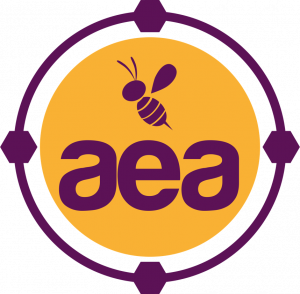
Don’t Guess, Test: How Farmers Can Use Regenerative Agriculture to Battle Rising Input Costs
“Farmers we talk to across the country have been concerned,” said Jason Hobson, CEO of AEA. “The price of nitrogen has increased by as much as 300% in certain areas this year. Paired with the drought in certain parts of the country, this year has been a significant challenge for growers and our overall agricultural production.”
In a recent report from the Department of Agriculture, one grower predicted that his yields might fall short of last year by as much as 50% due to droughts in his area and how much less nitrogen he can afford to put down.
Cotton and vegetable grower James Johnson from Columbus, NM reports, “Inputs were up close to 250% in my area on fertilizer. Many of my grower friends are having a challenging year, and some even gave up on planting certain crops for this year.”
“The current forecast is bleak, but we are working daily to change that,” said Hobson. “Our objective is to partner with growers looking for a better way to grow and be financially profitable; we aim to provide a pathway to transition from the conventional paradigm of agriculture to a regenerative approach.”
The cost of running a farm has always been subject to the whims of the market. Still, the rapid increase in the price of chemical inputs such as herbicides and insecticides has growers feeling even more out of control than usual. A higher cost of inputs means that many farmers are forced to make hard decisions about what to cut.
“It can feel like you’re farming in the dark, deciding what you need to cut or what you need to apply without really knowing,” said Hobson. “Our approach is designed to answer questions like these. Since the beginning, we have always said that we don't guess; we test. It is that type of scientific approach that drives everything we do and everything we recommend.”
The team at AEA takes a systems approach to soil management and plant nutrition. This comprehensive nutrition plan considers long- and short-term soil and crop needs.
“Our most important in-season tool is Plant Sap Analysis, which helps us understand what is happening with the nutritional integrity of your crop throughout the season,” said Hobson.
AEA’s Plant Sap Analysis provides the opportunity to determine, then apply the precise amount of a needed nutrient before a deficiency manifests as a disease or weakness. This allows AEA consultants and the growers they serve to proactively solve problems and achieve higher quality and yield levels.
“The two conventional approaches to crop production are to over-apply due to a lack of data or to pull back due to rising application costs,” said Hobson. “We believe that both of these approaches are inefficient and extraordinarily expensive. If we do not know exactly what our plants need, we end up paying for our inputs twice, once when we buy the product, and again in reduced yields and quality.”
As growers face the seemingly impossible decision between paying astronomical prices for inputs and sacrificing yields, the team at AEA insists that there is a third, better way: to test.
“What we’re doing here is putting power back in the hands of the farmer and reacquainting them with their land, crops, and the nutritional makeup of their soils,” said Hobson. “At that point, we can confidently recommend what and how much to apply in order to harvest a profitable crop.”
James Johnson reports “AEA taught me that one of the biggest things we can do is cut out unnecessary inputs. Especially in fertility, there were lots of inputs we were applying because it was what dad did and granddad did and it doesn't have to be that way”.
AEA’s biological and mineral nutrition products are made to be used inside of a regenerative system to improve crop quality, yields, and disease and insect resistance while regenerating soil health.
“We formulate and manufacture high-quality plant nutrition and soil amendments,” said Hobson. “Our use of these products is based on our fundamental belief in the intelligence of nature. We believe that when operating as designed, nature's processes work cooperatively, in perfect harmony, to create nutrient-rich, productive soils to feed disease-resistant plants that produce the highest quality fruit.”
You can read more about AEA’s systematic approach to soil management and plant nutrition and learn more about their products by visiting https://www.advancingecoag.com/.
Sandra Hungate
Advancing Eco Agriculture
+1 800-495-6603
email us here
Visit us on social media:
Facebook
Twitter
LinkedIn
EIN Presswire does not exercise editorial control over third-party content provided, uploaded, published, or distributed by users of EIN Presswire. We are a distributor, not a publisher, of 3rd party content. Such content may contain the views, opinions, statements, offers, and other material of the respective users, suppliers, participants, or authors.


